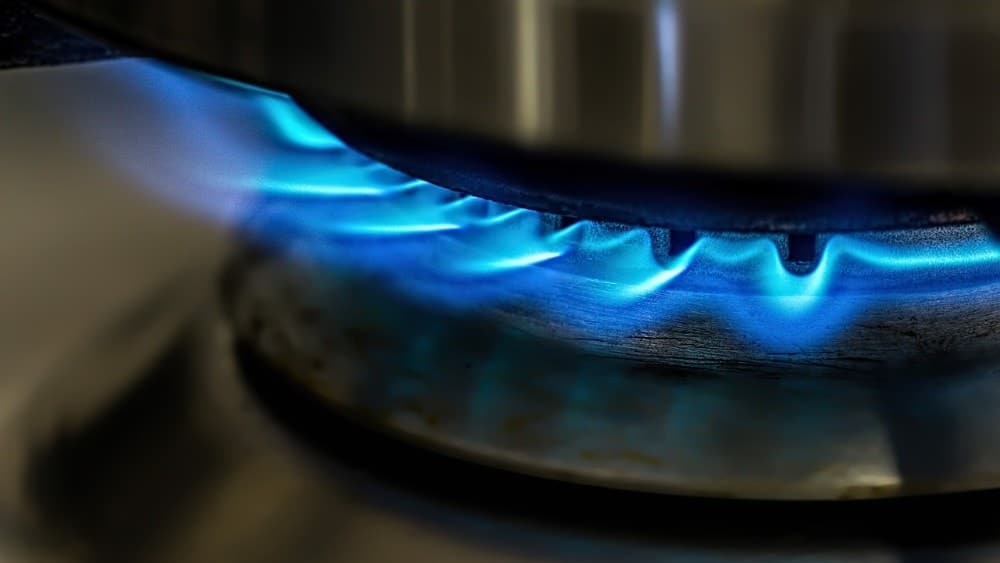Brewing your own beer can feel like a daunting task, especially if you think you need fancy equipment or a kit to get started. But guess what? You don’t! With a few simple ingredients and some basic tools you probably already have at home, you can dive into the world of homebrewing and create your very own delicious beer.
Understanding the Basics of Home Brewing
Brewing beer at home is a rewarding experience that combines art and science. By grasping the fundamentals, I can guide you through creating your own unique brews.
The Science Behind Brewing
Brewing beer involves a chemical process called fermentation. Yeast converts sugar into alcohol and carbon dioxide. The key stages include mashing, boiling, fermenting, and conditioning. Mashing involves soaking crushed grains in hot water, which activates enzymes that convert starches into sugars. During boiling, hops are added for bitterness and aroma, while boiling also sterilizes the wort. Fermenting occurs after cooling the wort with yeast to start the conversion. Finally, conditioning enhances flavors and carbonation.
Essential Ingredients You Will Need
To brew beer without a kit, gather these essential ingredients:

- Malt: Malted barley or other grains provide fermentable sugars. Aim for 6 to 8 pounds for a standard batch.
- Hops: Hops add bitterness, flavor, and aroma. Use 1 to 2 ounces based on your taste preference.
- Yeast: Choose an appropriate yeast strain for the beer style. One packet typically suffices for a 5-gallon batch.
- Water: Use clean, chlorine-free water. The quality impacts the final product.
- Priming Sugar: For carbonation, use around 3/4 cup of corn sugar at bottling time.
With these ingredients and basic knowledge in hand, you’re set to start brewing your own beer at home.
Equipment Required for Brewing
Brewing beer at home is an exciting venture that requires only a few essential pieces of equipment and some common household items. With the right tools, you can create exquisite brews without spending a fortune.
Common Tools and Supplies
- Brew Pot: A large stainless steel or aluminum pot can hold at least 5 gallons. This pot handles the boiling process where you’ll extract flavors from the malt and hops.
- Fermentation Vessel: A glass carboy or food-grade plastic bucket works well for fermentation. This container allows yeast to convert sugars into alcohol.
- Airlock: This small device fits on the fermentation vessel’s top, letting CO2 escape while keeping contaminants out. It’s crucial for a successful fermentation.
- Thermometer: An accurate thermometer helps in taking precise temperature readings during mashing, boiling, and fermentation stages.
- Hydrometer: This device measures the specific gravity of your brew, allowing you to calculate potential alcohol content and fermentation progress.
- Sanitizing Solution: Proper sanitation prevents spoilage. Use a no-rinse sanitizer like Star San to clean all your equipment before and after brewing.
- Bottle Capper: If you bottle your beer, a capper seals the caps onto bottles, ensuring carbonation and preventing contamination.
- Siphon (Auto-siphon): This tool helps transfer beer from one vessel to another without disturbing sediment, maintaining clarity and flavor.
Alternative Solutions for Brewing Gear
- Kettle Alternatives: If you don’t have a brew pot, any large, heavy-bottomed pot can suffice. Just ensure it can hold at least 5 gallons.
- Fermentation Containers: Glass jars, food-grade buckets, or even soda bottles can work as fermentation vessels. Just make sure they’re clean and sanitized.
- Home-Made Airlock: A balloon with a small hole can serve as a makeshift airlock. Just place it over the opening of the fermentation vessel, allowing gases to escape.
- Temperature Control: Wrap blankets around your fermentation vessel to control temperature fluctuations. Alternatively, create a simple water bath by placing the vessel in a tub of water.
- Siphoning Methods: In the absence of a siphon, use a turkey baster to transfer beer between containers, ensuring a gentle approach to avoid sediment disturbance.
- Natural Bottling: For bottling, pour your beer directly into clean, sanitized bottles. You can use grolsch-style bottles with swing tops or repurposed commercial beer bottles.
With these tools and alternative solutions, brewing beer at home becomes a fulfilling and enjoyable experience. Access to the right equipment makes all the difference, allowing for creative exploration in your brewing journey.
Step-by-Step Guide to Brewing Beer
Brewing beer at home is an exciting journey. Let me walk you through the essentials of preparing ingredients, the brewing process, and fermentation.
Preparing Your Ingredients
Choosing quality ingredients is crucial. I always start with malt, which provides the sugars for fermentation. I’d recommend using malted barley, but options like wheat or rye add unique flavors. Hops add bitterness and aroma; I often pick varieties like Cascade or Centennial for their bright, floral notes. Yeast is the magic ingredient that transforms sugars into alcohol. Opt for a dry yeast for simplicity, or try liquid yeast for more complex flavors. Fresh, clean water is also vital; use filtered or bottled water if your tap water isn’t great. Lastly, priming sugar helps carbonate your beer before bottling.
Brewing Process Explained
Begin by heating your water in a brew pot. Once the water reaches about 160-170°F, add your malted grains. This process, called mashing, lasts for about an hour, allowing enzymes to convert starches into fermentable sugars. After mashing, raise the temperature to around 200°F and bring the mixture to a boil, adding hops at various stages for bitterness and aroma. Boiling lasts around an hour; I’d recommend monitoring the time closely. After boiling, cool the wort quickly using an immersion chiller or an ice bath. This step helps you avoid unwanted bacteria and promotes a clean fermentation.
Fermentation Process
Once the wort is cool, transfer it to your fermentation vessel and add yeast. Seal the vessel with an airlock for gas release while keeping contaminants out. Fermentation typically takes 1-2 weeks at room temperature. I always check the specific gravity with a hydrometer to monitor fermentation progress. When fermentation is complete, you’ll notice bubbles slowing down, and the specific gravity stabilizes. This stage is often the most exciting, as the transformation from wort to beer takes place. After fermentation, it’s time to bottle, adding priming sugar to achieve carbonation. Store the bottles in a dark, cool place for another week before chilling and enjoying your brew.
Troubleshooting Common Issues
Brewing beer can come with a few hiccups along the way. Knowing how to troubleshoot these issues helps elevate your brewing experience and ensure a satisfying outcome.
Overcoming Mistakes in Brewing
Mistakes happen during brewing, but they don’t have to derail the process.
- Too Much Hops: If flavors are overly bitter, consider reducing hop quantities in future batches. Adding a pinch of sugar can balance bitterness in the final product.
- Stuck Fermentation: If fermentation stalls, gently swirl or stir the fermentation vessel to re-aerate the beer. Check the temperature; it may need a slight adjustment.
- Off Flavors: If your brew tastes odd, check sanitation practices. Contaminated equipment may introduce undesirable flavors.
Tips for Improving Your Brew
Enhancing your brew can lead to better results with each batch.
- Use Quality Ingredients: Always opt for fresh, high-quality malt, hops, and yeast. This greatly impacts flavor and aroma.
- Monitor Temperatures: Keep an eye on mashing and fermentation temperatures. They should stay within specific ranges to promote optimal yeast activity.
- Revisit Sanitization: Maintain a rigorous sanitization routine for all equipment. This minimizes the risk of unwanted bacteria affecting flavor.
- Experiment with Recipes: Don’t hesitate to tweak recipes or try new ones. Adjusting grain types or hop varieties can inspire unique flavors.
Storage and Bottling Techniques
Bottling and storing homebrewed beer correctly ensures a quality final product. I’ve found that taking the right steps during these phases can prevent common issues while maximizing flavor and freshness.
Proper Bottling Procedures
I prioritize cleanliness above all before bottling. I sanitize all bottles, caps, and equipment using a dedicated sanitizing solution to eliminate potential contaminants. I typically use a siphon to transfer beer from the fermentation vessel to bottles. Siphoning minimizes oxidation and preserves the beer’s flavors. When filling bottles, I leave about an inch of headspace at the top to allow for carbonation expansion. I also add priming sugar to the beer before bottling, which activates yeast and encourages carbonation. I cap each bottle securely and store them in a dark, temperature-controlled environment at around 65-70°F for carbonation, usually for about two weeks.
Best Practices for Storage
I store my bottled beers upright in a cool, dark place, away from light and temperature fluctuations that can spoil the flavor. I prefer temperatures between 50-55°F for most beers; this helps preserve aromas and minimizes oxidation. For higher alcohol brews, such as stouts and barleywines, a warmer storage temperature can enhance their complex flavors. If I plan to age the beer, I avoid moving the bottles frequently. I label my bottles with brewing dates and ingredients for reference, making it easier to track their development and enjoy them at their peak.
Conclusion
Brewing beer at home is an adventure I truly cherish. It’s not just about creating a tasty beverage; it’s about the joy of experimenting and learning throughout the process. With a few basic ingredients and some everyday tools, I can craft something unique that reflects my taste.
I encourage you to dive in and try your hand at brewing. Don’t be afraid to make mistakes along the way; they often lead to the best discoveries. Whether you’re brewing for yourself or sharing with friends, the satisfaction of enjoying your own creation is unmatched. Happy brewing!




